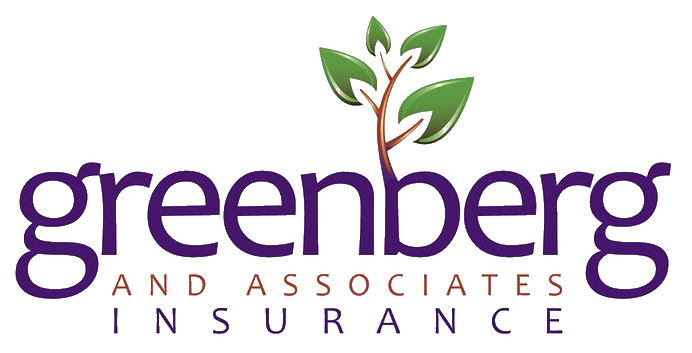Frequently Asked Questions
How to Complete Your healthcare.gov Account
Below are instructions on how to complete your healthcare.gov account which you can do as of November 1, 2019. Let our individual account manager Cecily Hutchins know when you've completed the application and she can help you enroll on the health plan of your choice!
Go to https://www.healthcare.gov/getcoverage/
- Select "Oregon" from the drop down menu and click "Get Coverage".
- Enter your zip code and click the third option down to "Start a Marketplace application".
- Create an account. You'll provide some basic information, create a username and password, and answer some security questions for added protection.
How to Estimate Your Income for the Marketplace?
Reporting income and household size
How to estimate your income for the Marketplace
When you fill out a Marketplace application, you’ll answer detailed questions about your income and household members. You’ll simply answer the questions. The Marketplace does the calculations and tells you what programs and savings you qualify for. Before you apply, you can make a ballpark estimate of your income to see if you may qualify for savings. This page tells you how. Important: The Marketplace application makes the final determination of your eligibility for savings. It uses details you provide to develop a figure called “modified adjusted gross income” (MAGI). MAGI is used to determine your eligibility for coverage savings. The method below helps you make only a rough estimate of MAGI. You can use this number whenever a tool on our site asks you to estimate your income for the year. You won’t use this estimate anywhere in the Marketplace application itself. Remember that you find out your actual eligibility for programs only when you submit a Marketplace application.How to make a ballpark estimate
Start with your adjusted gross income (AGI) (http://www.irs.gov/uac/Definition-of-Adjusted-Gross-Income) . You’ll find this on your most recent federal income tax return. For most people, AGI is very close to or identical to MAGI. Where to find AGI on IRS tax forms:- Form 1040: Line 37
- Form 1040 EZ: Line 4
- Form 1040 A: Line 21
- Add the following kinds of income, if you have any, to your AGI:
- Tax-exempt foreign income
- Tax-exempt Social Security benefits (including tier 1 railroad retirement benefits)
- Tax-exempt interest
- Don’t include any Supplemental Security Income (SSI) (http://www.ssa.gov/ssi/)
- Consider things like expected raises, new jobs, or other employment changes; higher or lower tax deductions; and changes in income from self-employment.
- Make sure you include income changes for anyone who’ll be a dependent on your 2020 federal income tax return.
- Also account for any expected changes to your household, including gaining or losing tax dependents.
Estimating your income if you’re unemployed
It’s hard to predict your annual income if you’re unemployed. Still, it’s important to make your best estimate based on all current or expected sources of income for the year, for everyone in your household. See how to estimate your income if you’re unemployed (/unemployed/coverage/#unemployedincome).More details on reporting income and household members
How to Report Your Annual Household Income
Reporting income and household size
How to report your annual household income
When you apply for premium tax credits and other savings in the Marketplace, you’ll need to estimate your income for the year for which you’re applying for insurance.. You'll provide this information on your Marketplace application. You can start by adding up the following items for:- You and your spouse, if you’re married and will file a joint tax return
- Any dependents who make enough money to be required to file a tax return
Which income sources to include
For each of the following sources, estimate what your income will be in the year for which you’re applying for insurance. If you’re not sure what your income will be, make your best estimate.- Wages
- Salaries
- Tips
- Net income from any self-employment (/self-employed/) or business (generally the amount of money you take in from your business minus your business expenses)
- Unemployment compensation
- Social Security payments, including disability payments -- but not Supplemental Security Income (SSI)
- Alimony
- Child support
- Gifts
- Supplemental Security Income (SSI)
- Veterans’ disability payments
- Workers’ compensation
- Proceeds from loans (like student loans, home equity loans, or bank loans)
Federal taxable wages
Don’t include as income any money that an employer takes out of your paycheck for child care, health insurance, or retirement plans that is “not taxable.” Sometimes these are called "pre-tax deductions." Your pay stub should list these deductions individually. The pay stub may list your "federal taxable wages." If it does, use that figure to report your pay. For more information on reporting your income, see IRS Publication 525 (http://www.irs.gov/pub/irspdf/ p525.pdf).Deductions from your income
You can also report certain deductions (/reporting-deductions/) from your income by logging in to your account and updating your application.More answers
- My spouse is insured. Since I’m applying for insurance only for myself, do I include his or her income?
- What if my income turns out to be different from what I estimate?
- If I make withdrawals from my IRA or 401k, does this count as income?
- What if I don’t plan on filing a tax return?
Rules For Setting Up Group Health & Dental Insurance
- YOU SELECT HOURLY WORK WEEK EMPLOYEES MUST WORK TO BE ELIGIBLE FOR COVERAGE (Can be between 17.5 – 40 Hours Per week)
- YOU SELECT EMPLOYEE PROBATIONARY PERIOD (new hires can become effective first of the month, following date of hire, or after 30 or 60 days of employment)
- YOU MUST CONTRIBUTE 50% OF YOUR SINGLE EMPLOYEE’S MONTHLY PREMIUM (you do not have to pay anything for family members)
- COVERAGE MUST BE OFFERED TO ALL W-2 EMPLOYEES WORKING THE HOURLY REQUIREMENT AND THAT HAVE SATISFIED THE PROBATIONARY PERIOD.
- FOR GROUPS WITH 2-5 EMPLOYEES, ALL EMPLOYEES ARE REQUIRED TO ENROLL UNLESS THEY HAVE COVERAGE THROUGH A SPOUSE’S EMPLOYER (100% participation).
- EMPLOYEES MUST BE LISTED ON PAYROLL – (OQ/132 FORM PREFERRED).
- EMPLOYEES CAN CHOOSE FROM MULTIPLE PLANS THE INSURANCE COMPANY OFFERS, SO YOU CAN SET A $$ CONTRIBUTION AND HAVE EMPLOYEES PAY THE REST, AS LONG AS YOUR $$ IS AT LEAST 50% OF THE CHEAPEST PLAN BEING OFFERED.
Business Resource Checklist For Group Client
- Auto and Homeowner’s Insurance / Business liability/Worker’s Comp:
Dave Snyder, American Family Insurance
15220 NW Laidlaw Road, Ste. 220, Portland, OR 97229
(503) 466-2225
DSNYDE2@AmFam.com - Tax Services: Do you work with a CPA?
Susan Hjort, Ohanesian CPA
9011 SW Beaverton-Hillsdale Hwy, #1C, Portland OR 97225
503-520-1382
sueh@oacpas.com - 401(k) plan services Fiduciary:
Chris Goetz, CFG Wealth Management
503-222-7100
http://www.cfgwealth.com/ - Business Attorney:
Scott Schnuck, Attorney, Altus Law
http://www.altuslaw.co/
503- 374-1913 (Direct)
sschnuck@altuslaw.co - Supplemental Products:
Jason Rump, Family Heritage Group
Cell: 503-516-4794
Office: 440-922-5222
jason@northernstarsfinancial.com - Payroll Services:
Misty Martin-Zimmerman, Paychex
7650 SW Beveland Street, Ste. 200, Tigard, OR 97223
971-678-4443
mmartinz@paychex.com - Marketing / Website Services
Diane Economaki, Fuze 7 Marketing
Mobile: (503) 830-0355
Office: (503) 534-3724
diane@fuze7.com
Our Privacy Policy
This notice explains how Greenberg & Associates Insurance LLC may collect, use and share your
information. Information in this statement applies in addition to our normal privacy statement, in
accordance with the Affordable Care Act.
Why did you give me this notice?
We are legally required to give you this notice by applicable law and our agreement with the federal government. We respect your personal information and want you to fully understand how we may use and share your information.What information will you ask me to give you?
We must collect certain information about you, called Personally Identifiable Information (“PII”) in order to help you complete your application for health insurance on the Federally facilitated Marketplace (or Exchange) (“FFM”). PII is information that can be used to identify you or trace your identity. These are a few examples of PII. This is not a complete list.- Name
- Address
- Date of birth
- Telephone number
- Social security number
- Household income
- Marital status
- Race or ethnicity
- Credit or debit card numbers
How will you use my information?
We will use only the information that we need to help you obtain health insurance through the FFM and to provide Authorized Functions approved by the FFM, or other service as permitted under applicable law. These are a few of the authorized functions that we may conduct. This is not a complete list:- Helping with your application for insurance
- Answering question about your eligibility
- Helping to enroll you in a qualified health plan
- Helping with filing appeals of eligibility determinations
- Correcting errors in your application


